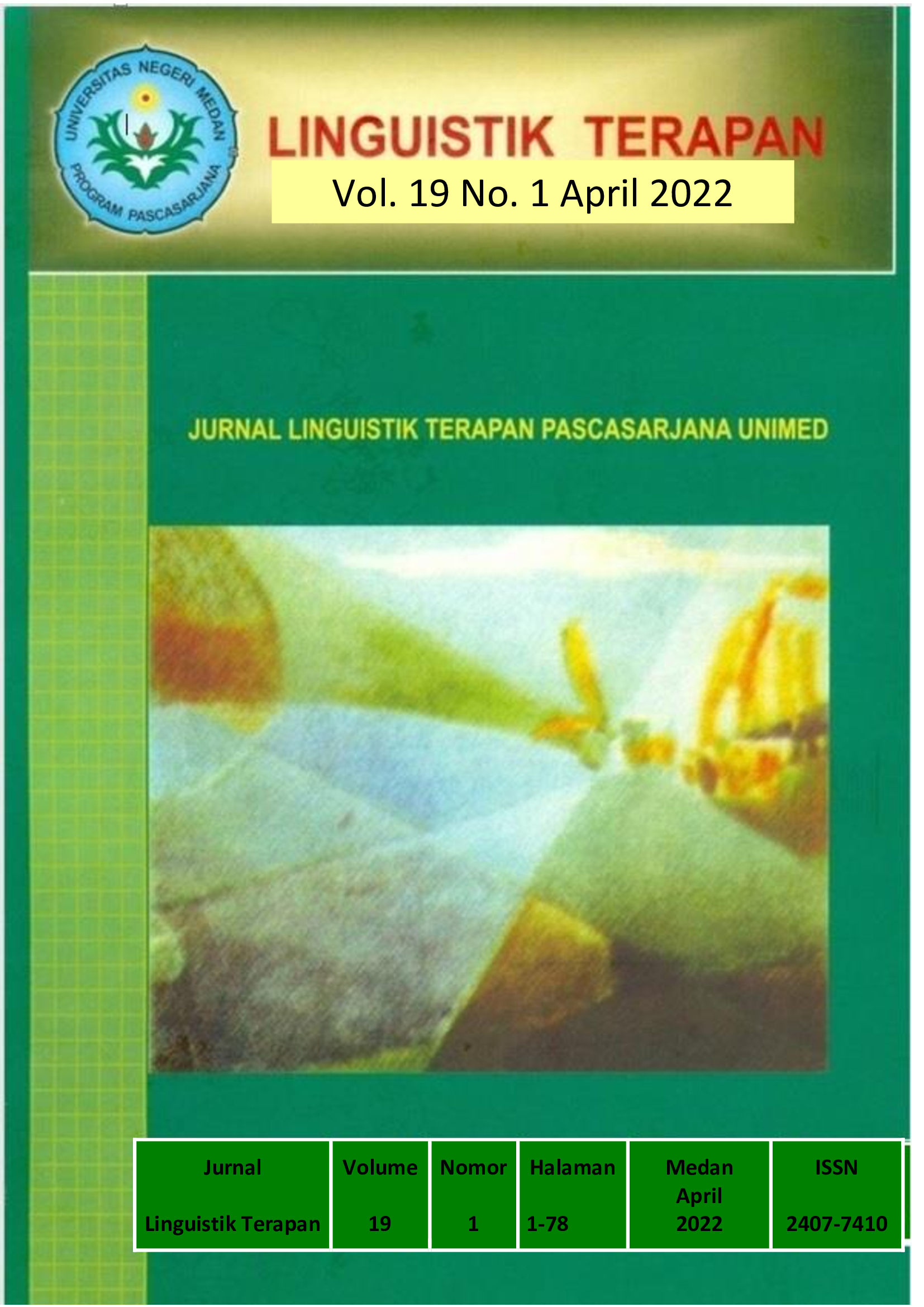REALIZATIONS OF MODALITY IN TEACHER-TO-TEACHER TALK OF FORCED ONLINE LEARNING
DOI:
https://doi.org/10.24114/lt.v19i1.34323Keywords:
Modality, Teacher-to-Teacher Talk, Online LearningAbstract
The objective of this study was to describe the ways the modality was realized in teacher-to-teacher talk of forced online learning. The data of this study were sentences expressing modality uttered by teachers while they were talking about forced online learning. Participant observation technique was performed to collect the data. Based on the data analysis conducted it was found that modality was realized through modal operators (47%), modal adjuncts (27%), interpersonal metaphors (16%), and predicator constituents (10%). The use of modal operators which was mostly found in realizing the modality indicates that the teachers tend to talk and think about states of affairs that are not present in the current situation and may never occur in the natural world. Moreover, there are some combinations of the realizations realized, namely: modal adjuncts and interpersonal metaphors; modal operators and predicator constituents; modal operators and modal adjuncts; interpersonal metaphors and predicator constituents; modal operators and interpersonal metaphors; modal operators, modal adjuncts, and interpersonal metaphors; and modal operators, interpersonal metaphors, and predicator constituents. It shows that teachers use some ways to assert or deny and to prescribe or proscribe when they express their judgments on forced online learning especially in informal situations.References
Azhari, B., and I. Fajri. (2021). Distance Learning During the COVID-19 Pandemic: School Closure in Indonesia. International Journal of Mathematical Education in Science, 1-21. https://doi.org/10.1080/0020739X.2021.1875072
Dhawan, S. (2020). Online Learning: A Panacea in the Time of COVID-19 Crisis. Journal of Educational Technology Systems, 49(1), 1“18. https://doi.org/10.1177%2F0047239520934018
Halliday, M. A., and C. M.Matthiessen. (2014). Halliday™s Introduction to Functional. Oxon: Routledge.
Kosko, K. W., and P. Herbst (2012). A Deeper Look at How Teachers Say What They Say: A Quantitative Modality Analysis of Teacher-to-Teacher Talk. Teaching and Teacher Education, 28(4), 589-598. https://doi.org/10.1016/j.tate.2011.11.010
Kruszewska, A., S. Nazaruk, and K.Szewczyk. (2020). Polish Teachers of Early Education in the Face of Distance Learning during the COVID-19 Pandemic. Education 3-13, 1-12. https://doi.org/10.1080/03004279.2020.1849346
Little, S. G., and A.A Little. (2008). Psychology™s Contributions to Classroom Management. Psychology in the Schools, 45(3), 227-234. https://doi.org/10.1002/pits.20293
Rui, Z., and L.Jingxia. (2018). The Study on the Interpersonal Meanings of Modality in Micro-blogging English News Discourse by the case of œDonald Trump™s Muslim Entry Ban. Advances in Language and Literary Studies, 9(2), 110-118. http://dx.doi.org/10.7575/aiac.alls.v.9n.2p.110
Shin, D. S. (2020). Introduction: TESOL and the COVID-19 Pandemic. TESOL Journal, 11(3), 1-3. https://doi.org/10.1002/tesj.547
Singh, V., andA. Thurman. (2019). How Many Ways Can We Define Online Learning? A Systematic Literature Review of Definitions of Online Learning (1988-2018). American Journal of Distance Education, 33(4), 289-306. https://doi.org/10.1080/08923647.2019.1663082
Truzoli, R., V. Pirola, and S.Conte. (2021). The Impact of Risk and Protective Factors on Online Teaching Experience in High School Italian Teachers during the COVID-19 Pandemic. Journal of Computer Assisted Learning, 37(4), 1“13. https://doi.org/10.1111/jcal.12533
Downloads
Published
How to Cite
Issue
Section
License
Copyright (c) 2022 Citra . Laoli, Rahmad . Husein, Anna Riana Suryanti Tambunan

This work is licensed under a Creative Commons Attribution-ShareAlike 4.0 International License.






